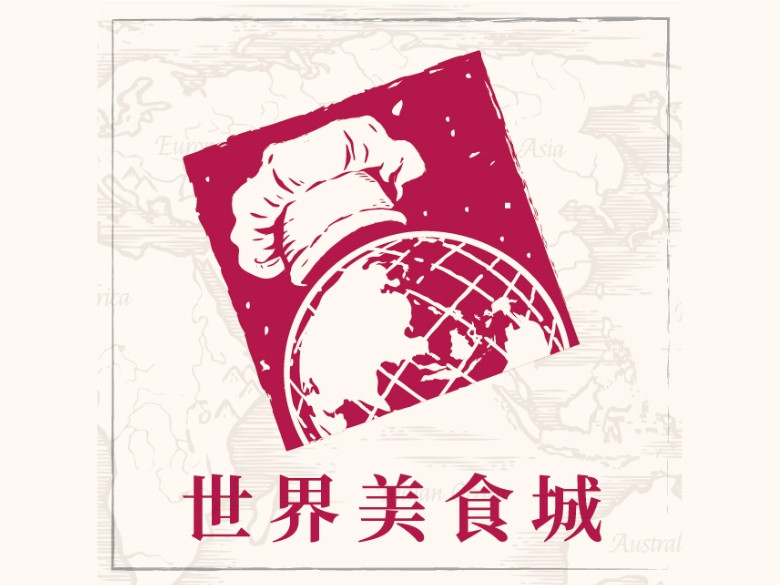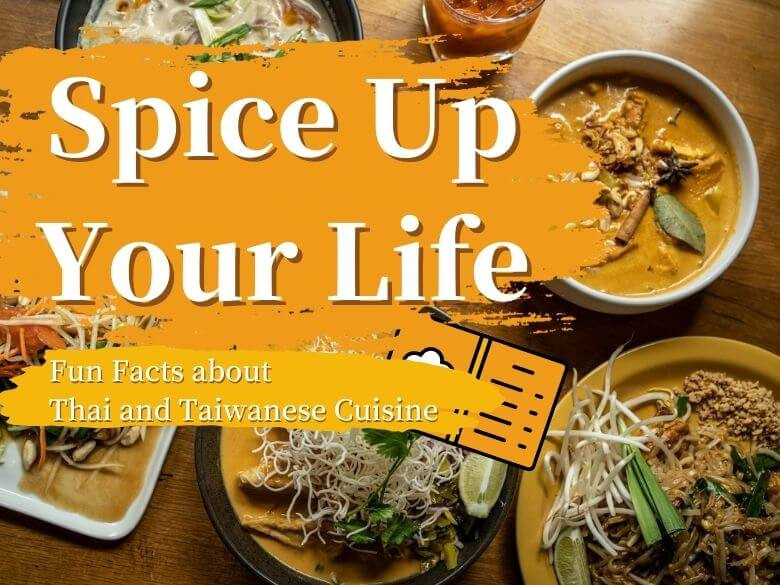Black Broth or White Broth? The Origin and Fun Facts about Bak Kut Teh
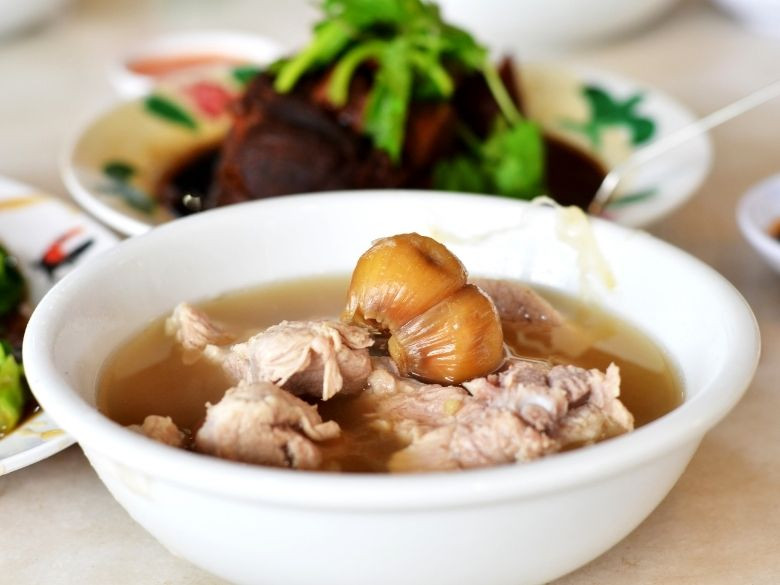
Bak Kut Teh is not only one of the most representative Malaysian dishes but also a memory of Chinese immigrants from Southern China since the early days. The exceptional cuisine in Malaysia and Singapore basically comes from the innovation of old flavors in the immigrants’ homeland. Bak Kut Teh perfectly combines the herbal fragrance of Chinese medicine with the aroma of braised pork, producing an amazing taste for people around the world. Besides the satisfaction from meat and bones, it is said that the broth of Bak Kut Teh helps improve blood circulation, making it a tasteful and nutritious dish. In this article, we’re going to show you how Bak Kut Teh was created and introduce the diverse variations of it.
Here’s How You Eat Bak Kut Teh in an Authentic Way!
If you eat Bak Kut Teh at overseas restaurants, you’ll probably get a set meal, and what you have to do will be just making some sauce for yourself. However, in Malaysia, eating Bak Kut Teh is a ceremonial process that requires a few steps!
As you enter the restaurant, the first thing you’ll have to do is to pick the parts of pork. If you prefer pork with more fat, you may ask for brisket, hock, etc.; if you prefer lesser fat, you may ask for rib or cartilage. If you are trying Bak Kut Teh for the first time, you can try bone meat or rear hock, the chewy pork skin and perfect ratio between meat and fat would be an ideal choice for the first-timers.
Each part has its special flavors. If you crave different kinds of delight, you better visit the restaurant earlier, otherwise, you will have only a few options to choose from. On the bright side, since the broth has been simmering for a long time, the soup would taste even more delicious. If you prefer the soup to meat, being late is not a bad idea!
As you grab a seat, the second step is picking a tea. Tea is also an essential part of eating Bak Kut Teh, and tea in Bak Kut Teh restaurants doesn’t require additional fees. Usually, the staff would come to you with a basket full of cheap Chinese tea bags. After you pick one, you can start making your own tea. In some cases, the staff would make tea for you.
Do you think that is all? Don’t forget the sauce! Basically, there are three condiments on dining tables: soy sauce with chili, dark soy sauce, and garlic paste. You can make your sauce with these three to your liking. Locals often use garlic paste because they believe that it can remove the smell of pork. After cleaning your utensils with tissues or hot water, all you have to do is to wait for an unforgettable feast to come.
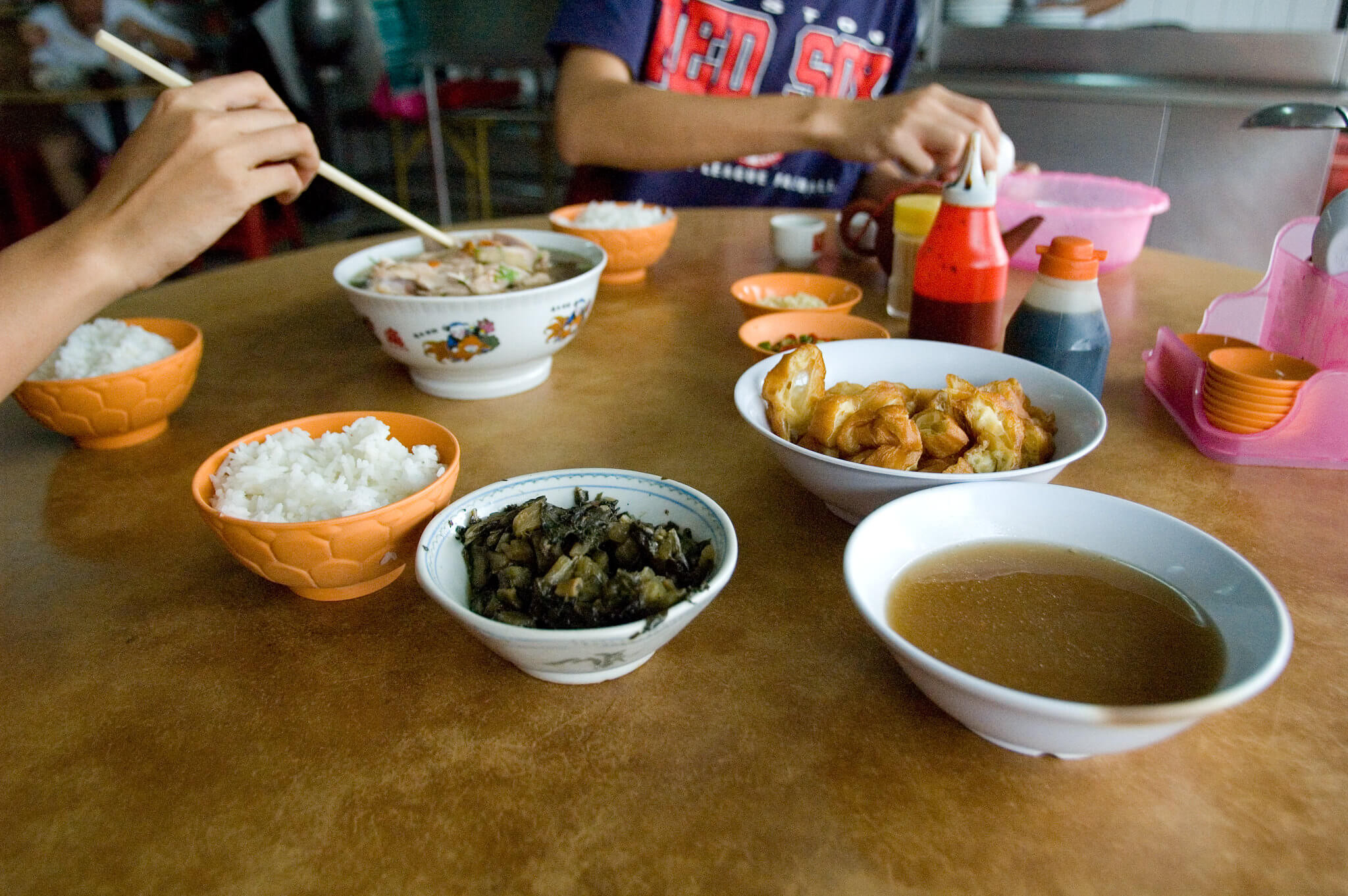 (Image : Flickr)
(Image : Flickr)
Why Is It Named “Bak Kut Teh”?
Bak Kut Teh is a Hokkien name meaning “meat bone tea”. So most Chinese speakers might wonder how the dish was named “meat bone tea” if it is a soup dish rich in Chinese medicine ingredients and spices yet has no tea in it. So here we’d like to share with you the history of Bak Kut Teh.
Bak Kut Teh originated from Klang, Malaysia. In the 1930s, there was a food stall located near Kota Bridge. The vendor’s name was Lee Boon Teh (李文地). He was an immigrant from Fujian Province, China. Initially, he sold soup with meat and bones as well as rice with fried shallots. Since there’s no signs for vendors back then, people tended to make nicknames for vendors, and Lee Boon Teh was nicknamed Bak Kut Teh (肉骨地; Bak Kut means “meat and bone”).
How, then, did the name become “meat bone tea (肉骨茶)” nowadays? Firstly, despite different tones, the Teh of Lee Boon Teh is pronounced the same as “tea” in Hokkien. Secondly, Hokkien people tend to drink tea if they eat something greasy, especially after they eat meat. Finally, someone associated the idea of the above-mentioned facts, calling the dish “meat bone tea” in a mindset that as you eat meat bone soup, you always have tea as the drink.
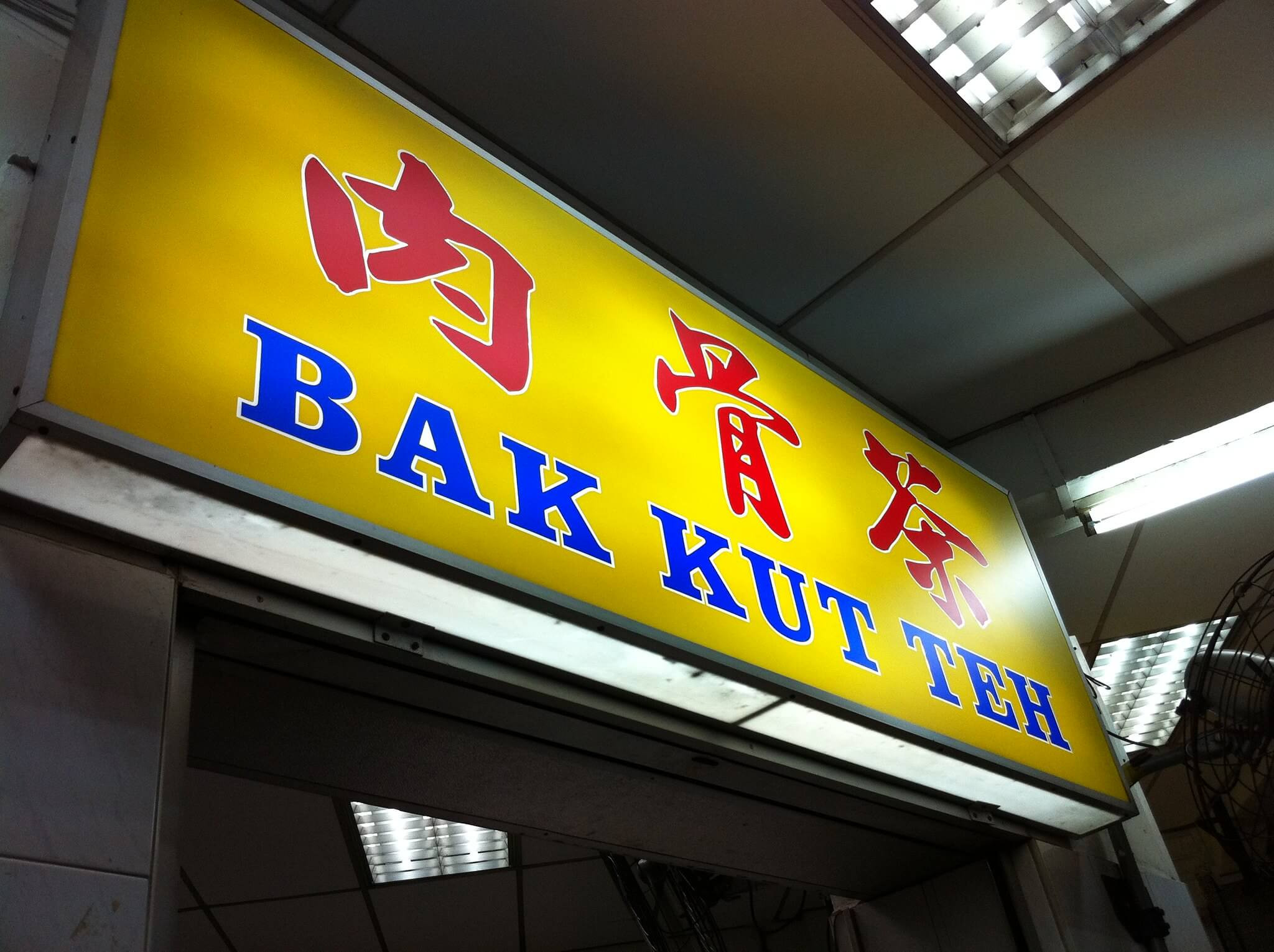
Later when Lee Boon Teh opened a food booth (or kedai makanan in Malay), he named it “Teck Teh Bak Kut Teh”. Passing his invention to his descendants, Bak Kut Teh successfully spread across Malaysia. Most food booths selling Bak Kut Teh were located near markets or harbors, serving Chinese laborers. With abundant nutrition from the soup and a generous amount of meat and bones, Bak Kut Teh has won people’s hearts in plenty of places.
If you want to enjoy the most authentic Bak Kut Teh, Klang will be a must-go on your travel list. Klang is so important in the world of Bak Kut Teh that even food booths in other regions would also have “Klang” on their signs.
In the early days, when people had Bak Kut Teh, they would order rice with fried shallots, which is a bowl of rice with lard and freshly fried shallots sprinkled on it. Later when life conditions became better, people started ordering side dishes for Bak Kut Teh. The most common sides dishes include soft youtiao (油条; Chinese oil stick) and tofu puffs (豆卜) since their spongy tissues make them the best food for absorbing the soup.
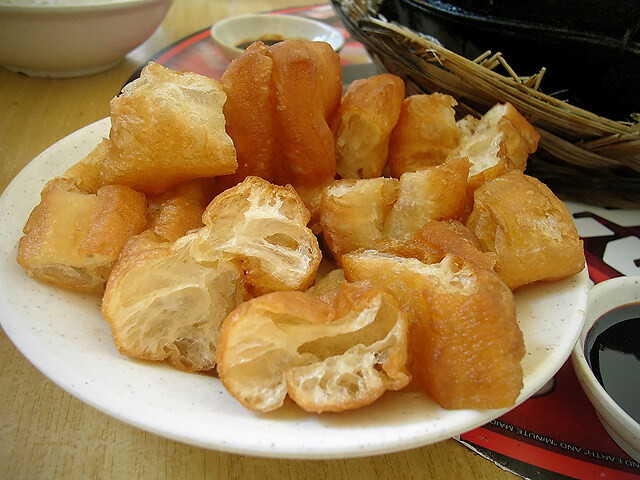
The “Black School” and the “White School” of Bak Kut Teh
Even a simple dish could evolve into various “schools”. Over the years, people have been comparing the variations of a dish and debating which is better. When it comes to rice dumplings, some people prefer Northern dumplings while some, Southern; when it comes to the seasonings for a sunny side up egg, some people prefer soy sauce while some salt; and when it comes to Bak Kut Teh, some people prefer Bak Kut Teh with black broth while some with white broth.
Bak Kut Teh in Klang is widely known for its black broth. Compared to other regions, Klang black broth features a thick texture and dark color. The black broth requires soy sauce to enhance the savory flavor and soybean fragrance; dark soy sauce is also essential since it dyes the pork into an appetizing color. While you may add soup for free in most Bak Kut Teh restaurants, Klang, unfortunately, doesn’t have such service. After all, the broth requires several hours of simmering, and restaurants would go bankrupt if they just provide the broth for free.
On the other hand, Teochew Bak Kut Teh in Malacca is widely known for its white broth. The main difference between Teochew and Klang Bak Kut Teh is that the former does not contain dark soy sauce. The reason why it has “Teochew '' in its name is that the inventor was rooted in Teochew (Malaysian Chinese used to name their products with their ancestral origin. Hokkien noodles is one of the examples). Besides Southern Malaysia, the “white broth school” is the mainstream in Singapore. Singapore Bak Kut Teh tends to have more Chinese medicine and pepper than Malaysia. The two countries often debate over the origin of Bak Kut Teh as well as which is the best. Even today, this debate seems to remain ongoing.
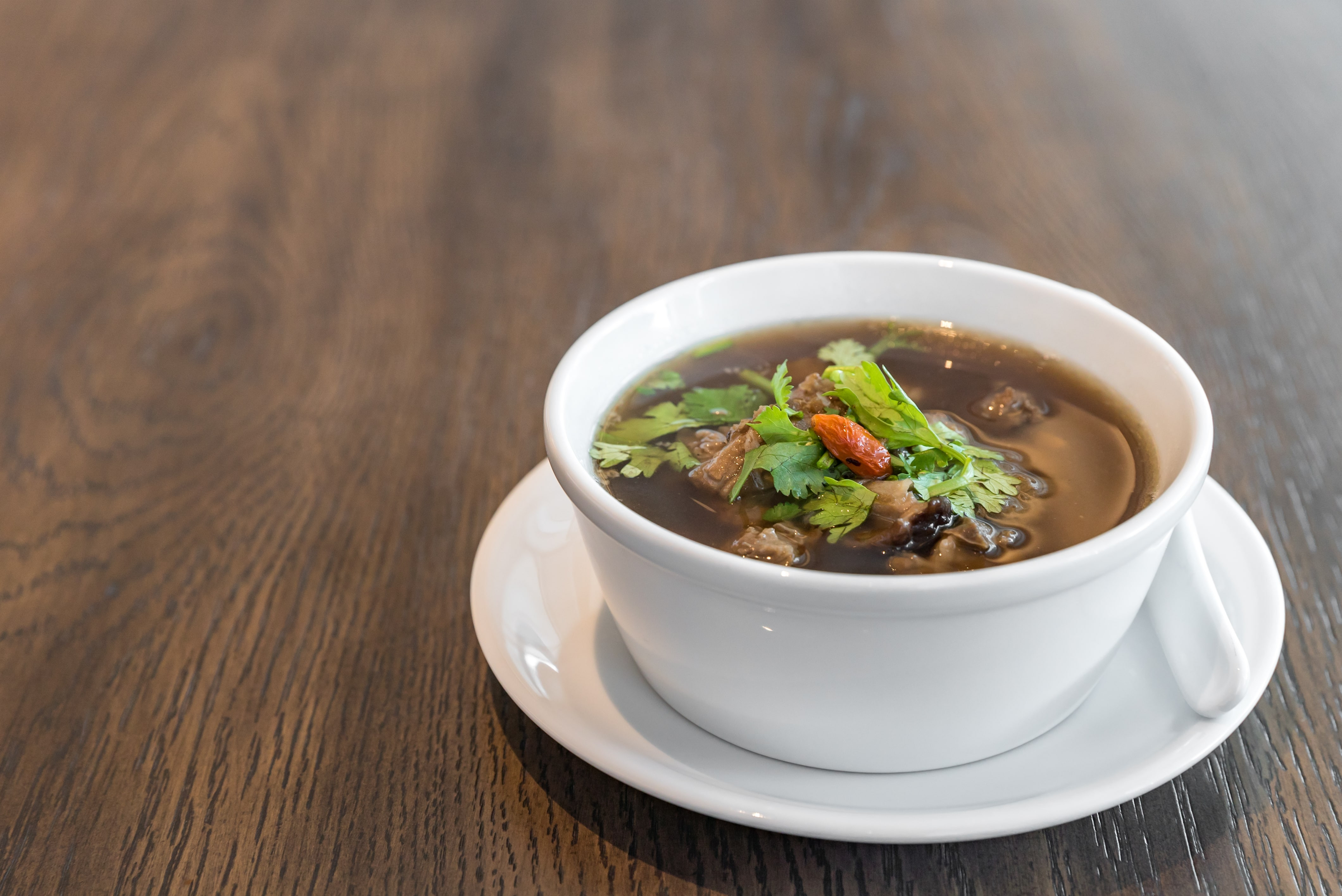
In addition to soy sauce, for bringing savory flavor and soybean fragrance, the black broth also has dark soy sauce in it to make pork look more appetizing.
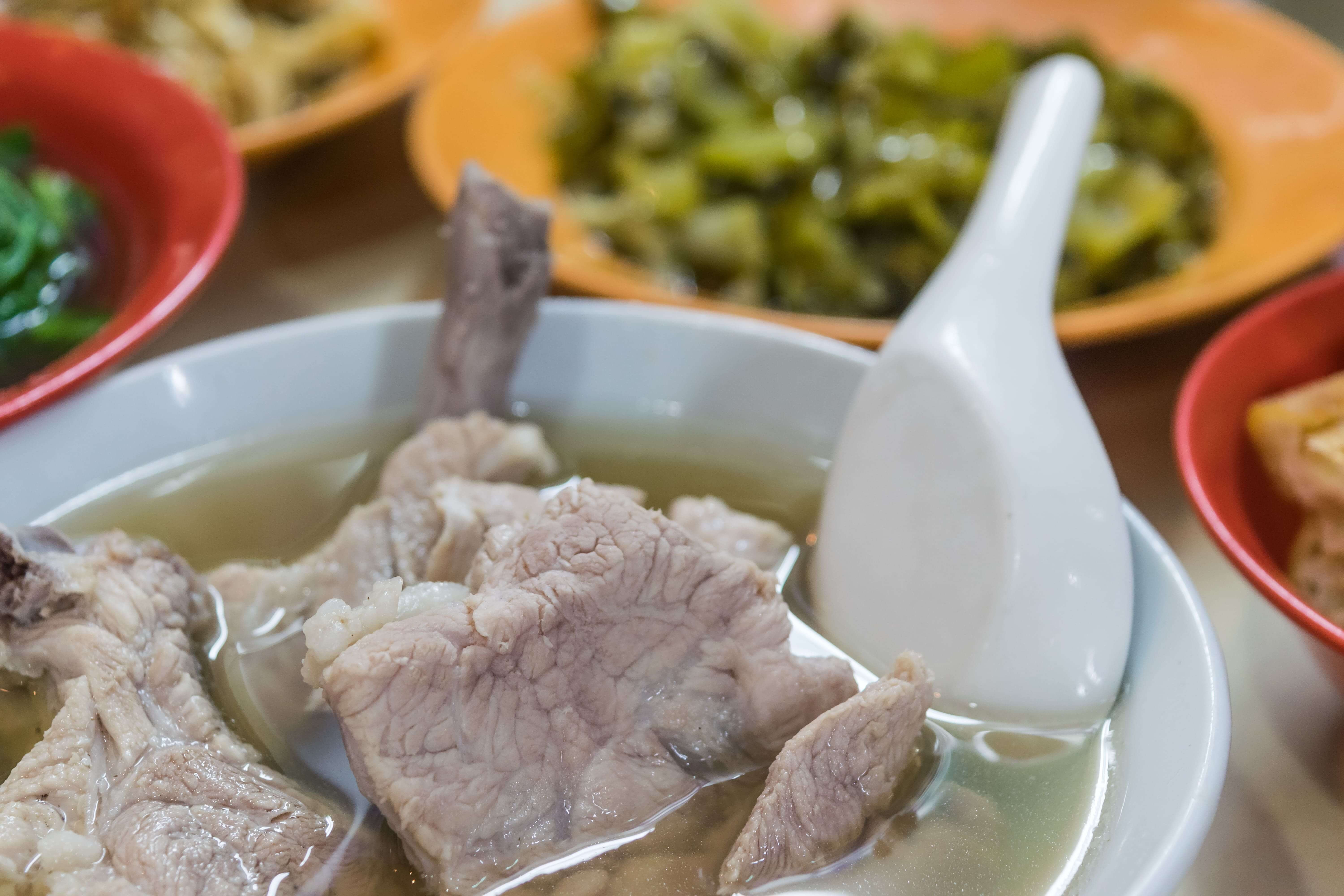
Without adding dark soy sauce, the white broth has a light color. This broth is widely used in Singapore. Singaporean Bak Kut Teh has more medicine and pepper powder than Malaysian one.
The Huge Diversity of Bak Kut Teh
As it becomes more popular, Bak Kut Teh has evolved into several variations. If the grease of Bak Kut Teh concerns you or you’re already not a big fan of soup dishes, you may try these versions of Bak Kut Teh:
The Healthiest Choice for Bak Kut Teh - Hakka Bak Kut Teh
Hakka Bak Kut Teh is no other than a dish named by a specific Bak Kut Teh restaurant. Yi Xin Ge (一心阁), a restaurant located in Petaling Jaya, Selangor, uses alternative ingredients for a healthier version of Bak Kut Teh. When female ginseng, also known as dong quai, is said to have excess heat, according to Traditional Chinese Medication, the chefs of Yi Xin Ge add ginseng roots to neutralize the heat so that customers of different body constitutions won’t feel uncomfortable after eating. As for the broth, they replace pork skin, hocks, and bones with white carrots, dried fish, and other ingredients. Without soy sauce nor dark soy sauce, the broth has a lighter color and features a different kind of light flavor other than the general white broth.
Enjoyable Even without the Soup - Dried Bak Kut Teh
People must lose appetite for soup during blazing seasons. Luckily, people can choose dried Bak Kut Teh as a substitute. Imitating Cantonese clay pot cuisine, people make dried Bak Kut Teh by mixing meat and bones with dried squid, chili, and dark soy sauce. All ingredients are being simmered until the soup is gone. Some restaurants would put the ingredients in a boiling pot to simmer first, and then put them in a clay pot to stir-fry if someone takes an order. To satisfy different needs from customers, Bak Kut Teh nowadays has more variations other than stir-fried Bak Kut Teh, including deep-fried Bak Kut Teh, spicy Bak Kut Teh, and more.
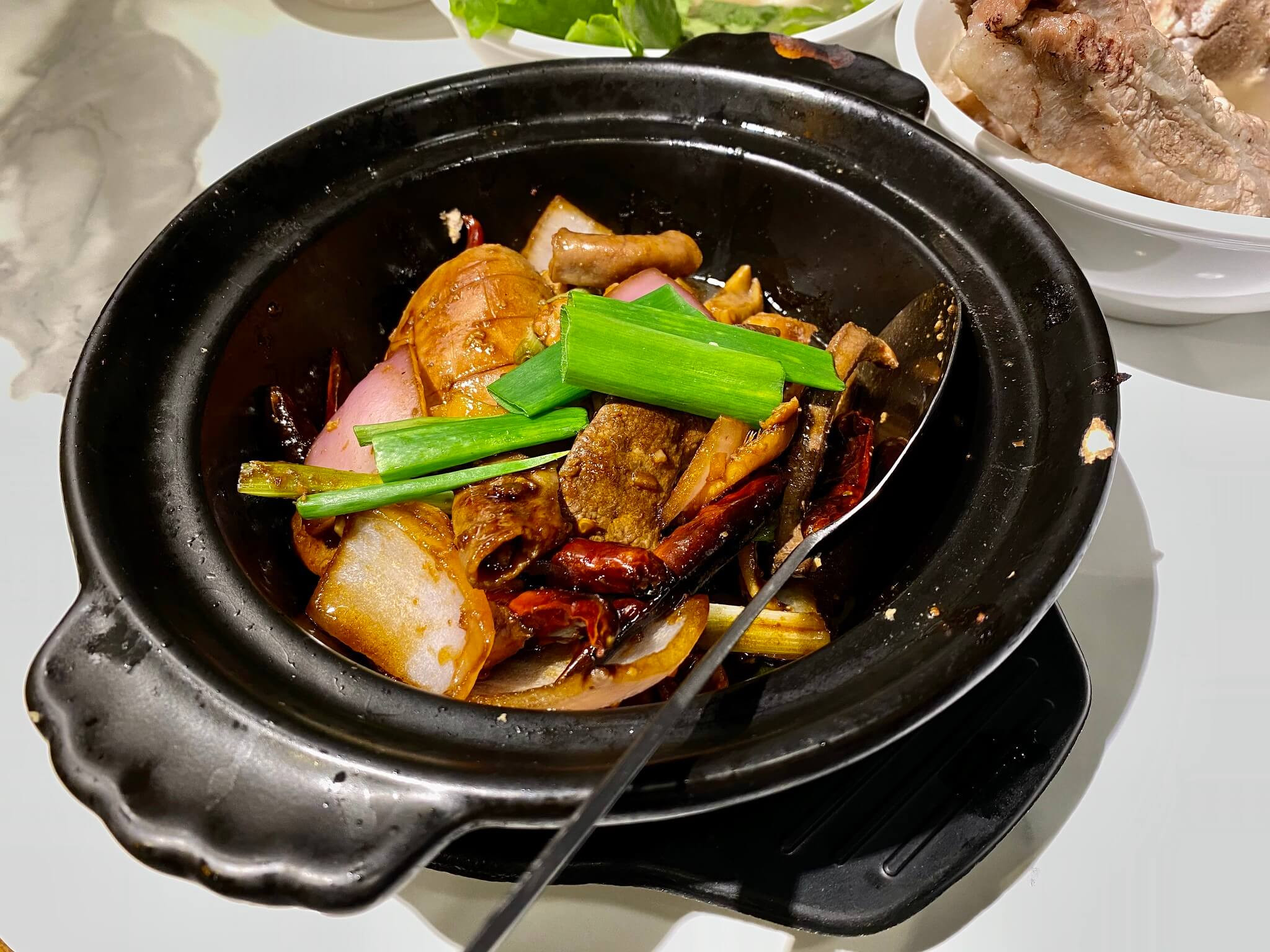
(Image : Flickr)
The Islamic-Friendly Version of Bak Kut Teh - Chik Kut Teh
From ingredients to cooking methods, Bak Kut Teh is undoubtedly a Chinese dish. But since the majority of Malaysian people is Muslims, Bak Kut Teh has developed another version which even those who can’t or don’t enjoy pork may love this dish as well. Chik kut teh is the most notable version for non-pork eaters. Instead of pork bones, chik kut teh uses chicken bones for making the broth. What’s more, there’s also vegetarian Bak Kut Teh which features in the delightful, refreshing taste of the broth, simmered with Chinese medicine and vegetables.
Even with the meat replaced, the delight remains the same.
Click the link for the full recipe of Chik Kut Teh : How to Make Chik Kut Teh
Vegetarians can also enjoy Bak Kut Teh!
Click the link for the full recipe of vegan Bak Kut Teh : Vegan Bak Kut Teh
A Dish to Feast on in Daily Life
Initially, the Chinese immigrants in Malaysia intended to remake their home dishes with local ingredients, but instead they have created an iconic dish of Southeast Asia. Nowadays, Bak Kut Teh has gained international attention and has become one of the must-eats for tourists if they ever visit Malaysia or Singapore. Be prepared to face continuous surprise because the recipes of Bak Kut Teh differ in every single restaurant. Share with us the most impressive Bak Kut Teh you’ve ever had!

